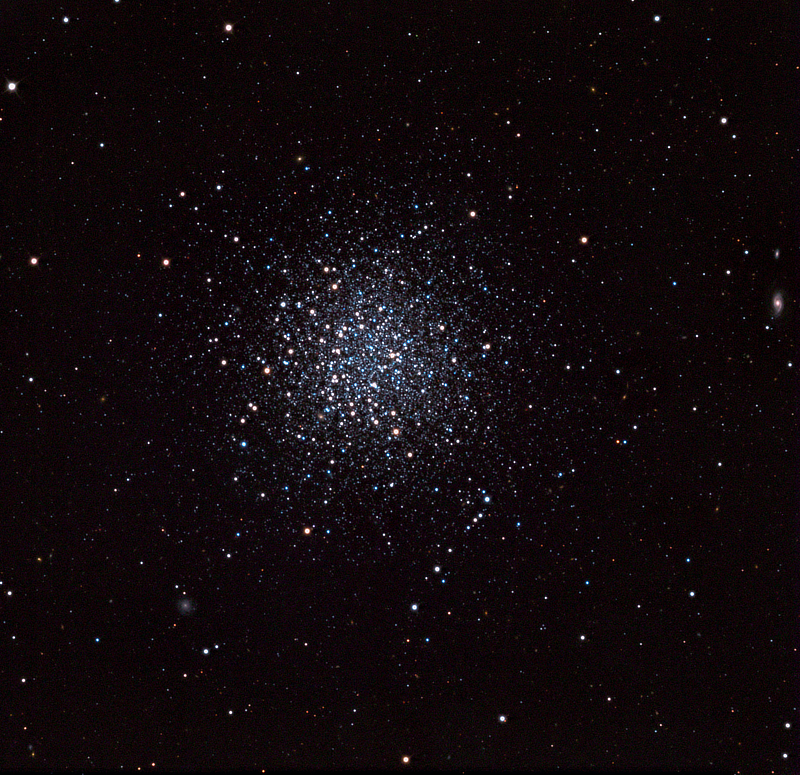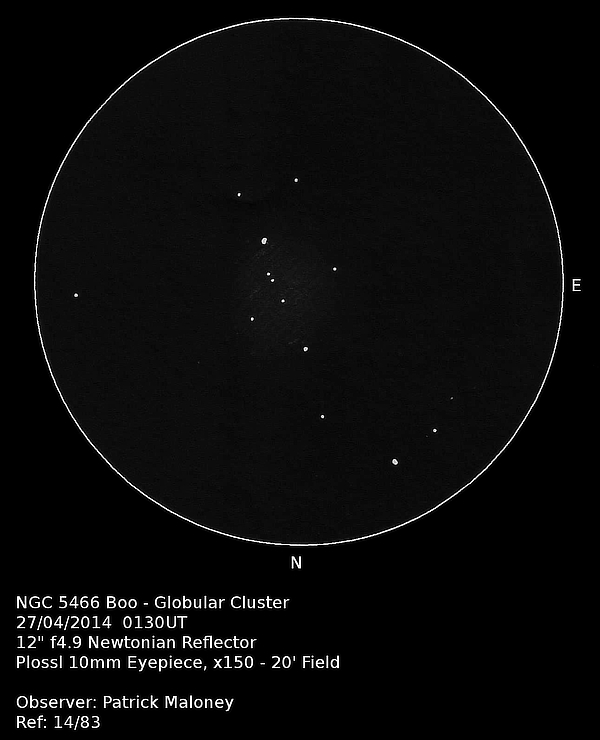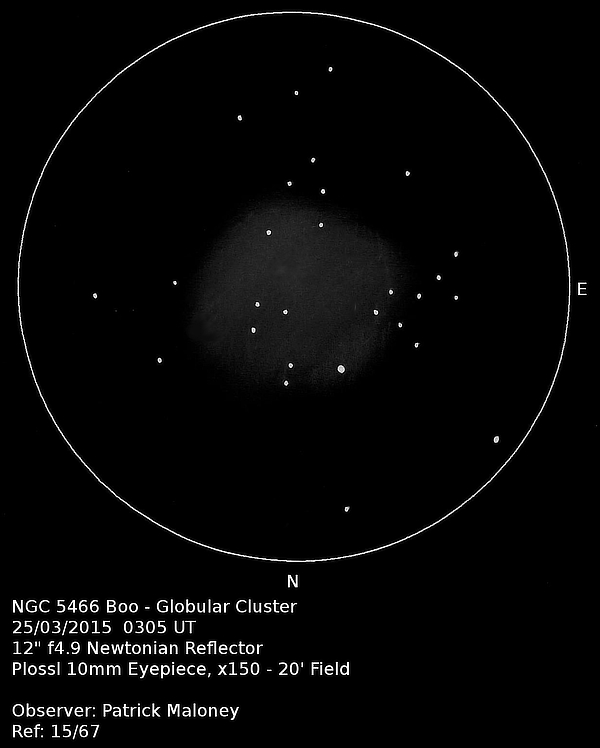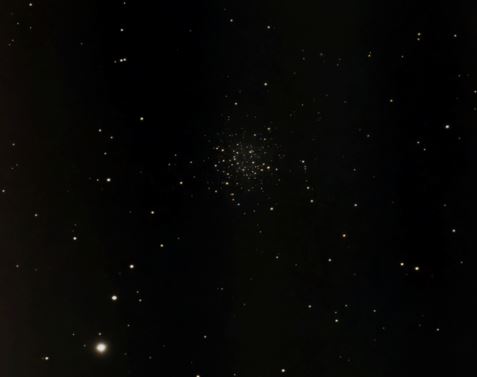NGC 5466 in Boötes
April 2025 - Nebula and Cluster of the Month
I hope you are all enjoying the spring galaxy season. Following on from the galaxies by midnight in the middle of April, we have a small grouping of four globular clusters coming into fine view. Two were observed by Charles Messier and included in his famous catalogue; M3 – see this column for April 2021 – and M53, and two fainter clusters which were discovered by William Herschel; NGC 5053 and NGC 5466.
This month we’ll be looking at NGC 5466. Discovered on the night of 17 May 1783, Herschel placed it in his category VI (very compressed and rich clusters of stars) as entry no. 9. In his catalogue, published in the Philosophical Transactions of the Royal Society in 1786, he describes it as A cluster of extremely small and compressed stars, 6 or 7’ diameter. Many of the stars visible, the rest so small as to appear nebulous.
This is still a very good description, and gives a good idea of what this object looks like through a modest telescope on a good night.
NGC 5466 lies in the west of Boötes, close to the border with Canes Venatici and 5° west of M3. The nearest Flamsteed-designated star is the 6.2-magnitude 11 Boo. The cluster lies at a distance of about 52,000 light-years. It shows signs of gravitational disruption, particularly in that it has a very long ‘tail’ of stars streaming behind it. The tail, or ‘tidal stream’ is very difficult to detect, but may be as much as 60° long. This is seen as evidence of tidal interactions between the globular cluster and the Milky Way. Some researchers have suggested that there have also been one or more interactions with the Large Magellanic Cloud1.

Although the catalogue magnitude of this object is given as 9.2, be aware that this is very misleading. NGC 5466 has very poor concentration, with no visually noticeable brightening towards the centre. Its concentration class is XII, the lowest, indicating a very loosely compressed object.
I first searched for NGC 5466 on 24 March 2014, whilst the object was the Webb Deep-Sky Society’s Object of the Season2. I classed my first attempt from my light-polluted home site as a ‘not seen’, though my notes from that night say There is a very small scattering of very faint stars where this object lies. This may be all I can see of it.
On further reflection, I realised that I should not expect to see a ‘globular cluster’ as such – a ball of stars with a distinctly brighter centre and an unresolved haze of background stars. The low concentration suggested that what I would most likely see (from under light-polluted skies at any rate) would be just what I did see – a scatter of the brightest individual member stars of the cluster and nothing else.
I returned to the object on the somewhat better night of 27 April 2014. I had more success this time. I detected a large but very dim patch – a very low-level glow. I only recognised it because of the faint scatter of stars across it. All the stars were very faint and difficult to place with any precision as they twinkled in and out of visibility. I made a sketch, reproduced here.

Nearly a year later, on 25 March 2015, I was at my regular dark-sky site in the Lake District. I described the night as cold and fairly crisp. The naked eye limiting magnitude was 5.8 and the object glass of the finder scope iced over. I couldn’t resist the opportunity to look at NGC 5466 under vastly superior conditions to those I could ever get at home.
It was quite a revelation. I had an amazing view. I could see a huge, pale, circular patch with dozens of stars splashed across it. Only 28 of those stars were certain enough to plot, with many others blinking in and out of sight, tantalisingly on the edge of visibility.

The final chapter (so far) of my personal history with NGC 5466 occurred on 14 March 2025. As the sky conditions at my home are now so poor, I cannot observe visually any more. For a recent birthday, I was bought a SeeStar S50, a marvellous little machine which means although I am no imager (I have no idea at all what a ‘luminance frame’ is, for example) I can at least now do something on a clear night. On this particular night, I returned to NGC 5466. The result is reproduced below, a 30-minute exposure that gives a pretty good impression of what this object looks like visually.

With many thanks to my family for the SeeStar.
| Object | RA | Dec | Type | Magnitude |
|---|---|---|---|---|
| NGC 5466 | 14h 05m 28s | +28° 32’ | Globular cluster | 9.2 |
References:
- See, for example, Yong Yang et al., ‘Revisit NGC 5466 tidal stream with Gaia, SDSS/SEGUE, and LAMOST’, Monthly Notices of the Royal Astronomical Society, Volume 513, Issue 1, June 2022, Pages 853–863.
- The Deep-Sky Observer, Issues 163, 165 and 166.